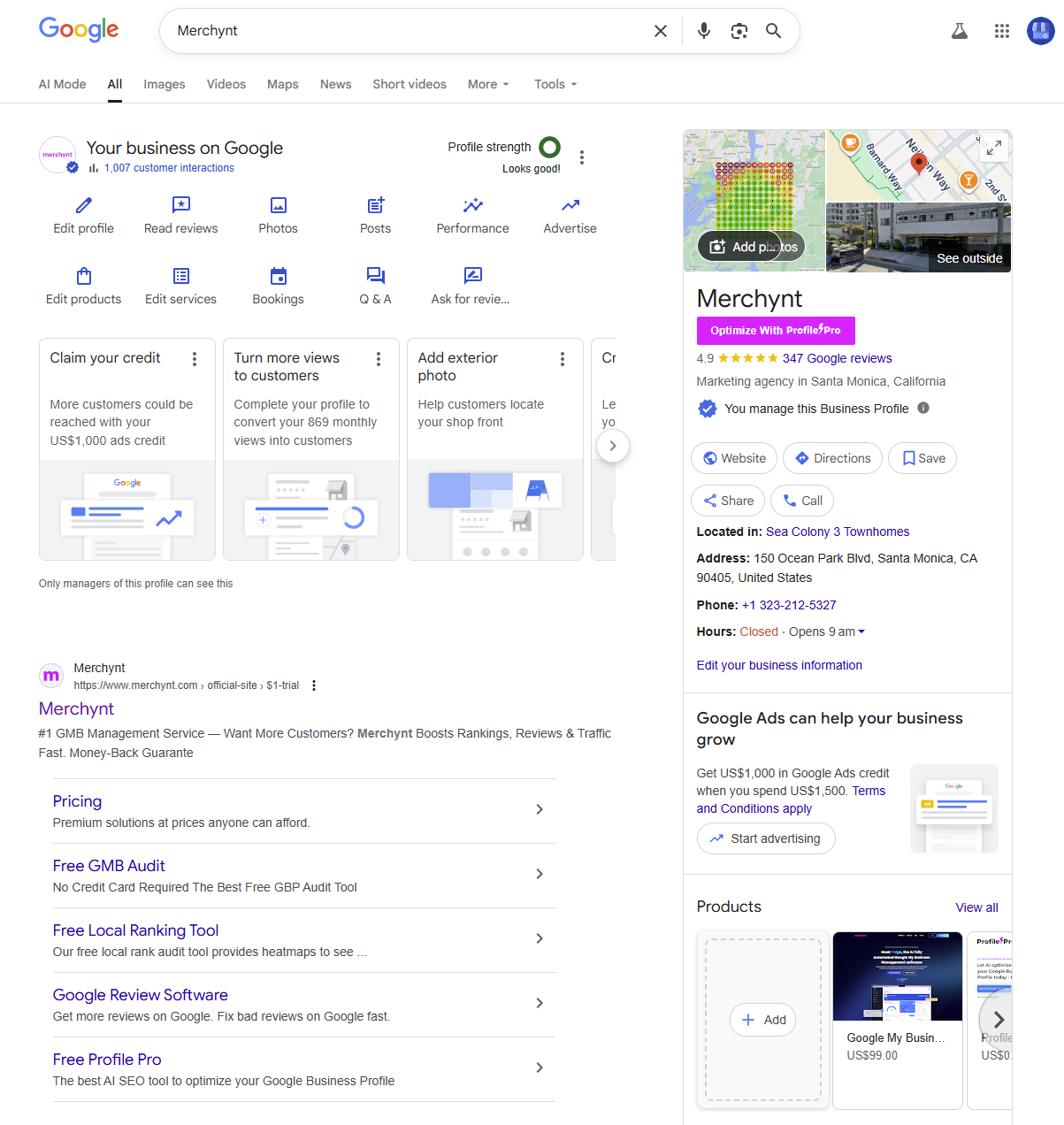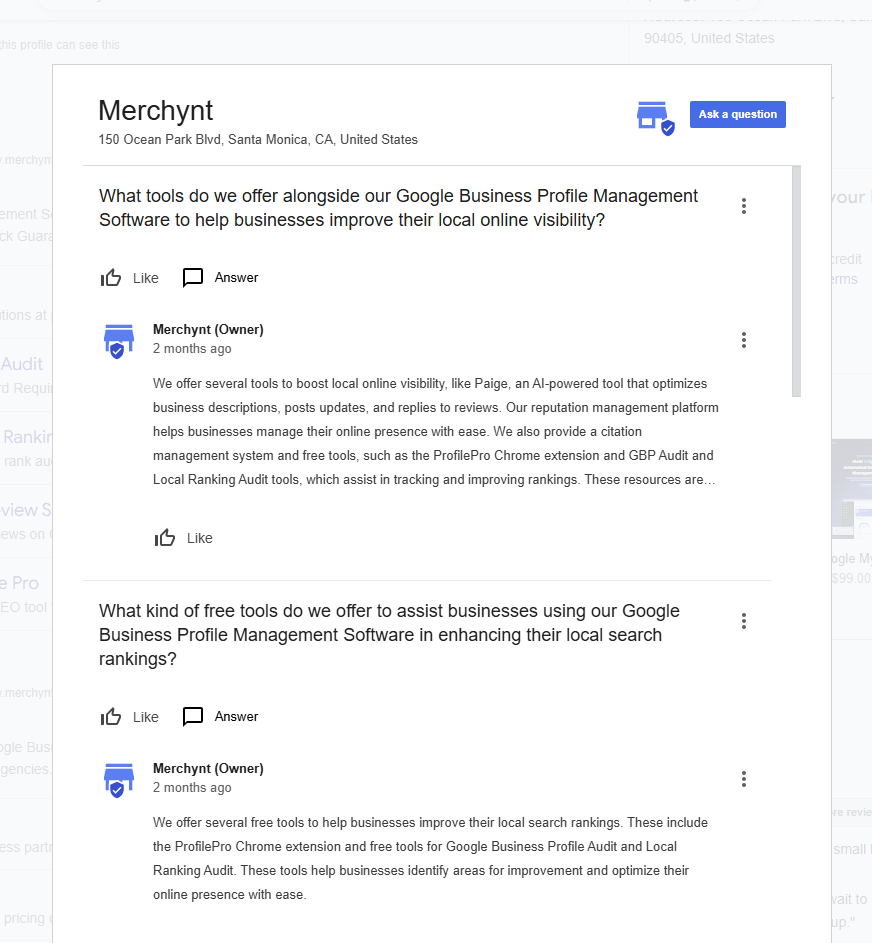.png)
Do you ever feel like local SEO is a game where the goalposts keep moving? Just when you finally get the hang of Google Business Profile optimization, another update drops, and suddenly, things don’t look the same anymore.
If you’ve been working in SEO for a while, you’ve probably noticed how often Google makes tweaks, some small, some massive. Since 2019, there have been hundreds of changes, from feature adjustments and interface makeovers to big algorithm shifts. In 2025 alone, Google launched its AI Search Mode, shaking up the way results are displayed.
But here’s the shocker: Google isn’t really moving the goalpost. The fundamentals of local SEO have stayed the same for years. What’s changing is the way Google refines its systems to deliver the best possible experience to users.
In this article, we’ll break down the local SEO strategies that never go out of style, and how you can adapt to updates without losing your mind.
Why Local SEO Feels Like Moving Goalposts
Local SEO can sometimes feel unpredictable. One day, you’re ranking number 1 in the local map pack, and the next day, you are ranking number 7. This is especially tough since research has shown that 72% of searchers use Google to search for local business information, and over half of shoppers plan to purchase within 72 hours of local research, and ~82% hire/buy within a week.
Finally, a 2025 CTR study shows that Google Business Profiles in the number 1 position get 17.6% of clicks, the second position gets 15.4%, while the 3rd ranking profile gets 15.1% of all clicks that go to Google Maps. This simply means that moving from number 7 to number 2 can 10x your sales as a business owner or marketing agency on Google. So yes, it’s fairly annoying when things switch up like this. The constant shift gives the impression that Google is playing tricks, but in reality, it’s just refining its results.
The Truth About Google’s Updates
Since 2019, Google has released hundreds of updates, from feature changes to UI tweaks to major algorithm shifts. In 2024 alone, there have already been about 6 - 10 several big changes, including the launch of AI Search Mode.
These updates are designed to help searchers, not confuse businesses. If you understand the fundamentals, every update becomes easier to navigate.
Core Ranking Factors That Haven’t Changed
Despite all the changes, certain pillars of local SEO have remained rock-solid:
- Activity on your Google Business Profile
- Authentic content sharing
- Strong review and Q&A signals
Let’s break them down one by one.
Factor 1: Stay Active on Your Google Business Profile

Your Google Business Profile (GBP) is the online storefront for your business. If it looks inactive, both potential customers and Google will overlook it. An active profile signals trust, relevance, and engagement.
How to Keep Your GBP Profile Engaging
Here’s how you can stay active without burning out:
- Post at least twice a week with updates, offers, or insights: Aim to post at least twice a week. When posting, focus on content that would be helpful to searchers who come across your Google Business Profile. This includes content like offers, discounts, or even upcoming events like karaoke night, girls' night, book club, or art sessions. This helpful information allows viewers to know what to expect from your establishment.
- Collect reviews consistently; don't wait for them to come in naturally. Try using QR codes, QR links, or NFC cards to encourage collecting reviews from your customers. Also, include a review-generating plan and integrate it into your sales funnel so that you can get more reviews from your customers. Try as much as possible to get detailed reviews from customers, not just ratings. Research has shown that customers would rather buy from a business with a 4.85/5 rating that has detailed reviews or feedback than from a business with a 5.0/5.0 rating but only ratings and no helpful reviews. The data shows that purchase likelihood peaks around 4.2–4.5 stars and declines as ratings approach a perfect 5.0; consumers also trust star ratings far more when they’re accompanied by written reviews.
- Add new photos and updates regularly to show your business is alive and thriving: Avoid using stock images and instead focus on using real images of your business. You can hire a photographer to take photos of your business or, better yet, use your mobile device. Google's algorithm loves real, authentic business images.
This is, of course, harder for businesses such as local marketing agencies, SEO experts, and other service providers. However, you can create assets using design software or tools like Gemini. That's fine as long as it's a unique asset you created to promote your business.
Factor 2: Share Value Through Authentic Content
Google values authenticity. Posting keyword-stuffed, robotic content doesn’t cut it anymore. Instead, your content should reflect your real business and people.
Best Practices for Posting Valuable Content
- Use keywords naturally without overstuffing: Make sure your content is SEO-optimized but not keyword-stuffed. Let your keywords flow naturally within your captions and updates. For example, using keywords that end with "near me" may not be practical as they do not flow seamlessly in content.
- Share real photos of your staff, products, or events: Share photos on your GBP profile at least once a week to keep the media section of your GBP updated and looking fresh. Remember to avoid generic stock photos that make your profile look impersonal.
Factor 3: Optimize Everything
In local SEO, little details can lead to big results. From image file names to alt tags, every optimization helps Google understand your business better.
How Image and Content Optimization Boosts Rankings
- Rename image files with relevant keywords before uploading: When you take an image with your phone, it automatically geotags it with the location where the image was taken. You can further optimize this image by renaming it so that it can be easily picked up by the algorithm. For example, a photo you took while at work in your office as a dentist can be renamed to “best_dentist_in_nyc.jpg”, with a descriptive alt text like "dentist in office attending to client with dental equipment," and a meta description of "top-rated dentist in NYC."
- Optimize your profile: Add your social media links, chat links, and at least 30 services to your services section, and fill them in with service descriptions. Include your booking link and website link. Go to your profile and use Google’s recommendations to ensure your profile is 100% up to date.
Factor 4: Fix and Maintain Citations
Citations are online mentions of your business (think Yelp, directories, listings). If your Name, Address, and Phone (NAP) aren’t consistent everywhere, Google gets confused, which can hurt rankings. Research has shown that Google is more likely to show Google Business Profiles with accurate information across listings first than profiles with inconsistencies across business directories.
Why Consistency Across the Web Matters
- Keep NAP exactly the same across platforms: NAP stands for your Name, Address, and Phone Number. Make sure to keep these aligned across all directories. You can maintain consistency by auditing your citations regularly and correcting outdated or incorrect listings immediately. Remember that in the world of AI-powered search, inconsistencies stand out more than ever.
Factor 5: Reviews and Q&As: The New SEO Goldmine
Reviews and Q&As are no longer just “nice to have.” They’re now critical trust signals. Google’s AI Search Mode pulls answers directly from customer reviews and Q&As when showing results. What's more, they can actually help you rank higher.
Take a look at the search results for the term “Best tacos in Los Angeles.” You will notice that the results were arranged by ranking score and the use of the keyword in the review. This is why just getting rankings won't help; you need your customers to leave as many detailed reviews as possible. We will share an article on how to get more reviews.

How Google’s AI Uses Your Customer Feedback
- Positive reviews boost trust: When you have good reviews and ratings on your Google Business Profile, it helps to build trust among potential customers and encourages them to patronize your business. Research has shown that 69% of customers say they’d feel positive about using a business if written reviews describe positive experiences.
- Negative reviews with professional replies show credibility: You can't always get positive reviews every time, but how you respond to negative reviews also matters. Research has also shown that 88% of consumers are more likely to look past a negative review if the business responds, and 47% of consumers are far more likely to use a business that responds to reviews promptly.
- Q&A sections act like mini-FAQs that Google AI can use directly in responses: Google AI Model pulls information from your GBP, so the more questions and answers on your profile, the better for you.

The good news is that when you ask a question on your Google Business Profile, even as the owner, there is no specification on who asked it, only on who answered it. This means you can ask and answer as many questions as you want; just make sure it's relevant. As a pro tip: Add and answer at least 20 Q&As on your GBP.
The Role of the AI-powered GBP Manager in Simplifying SEO
Keeping up with constant updates can feel overwhelming. That’s where tools like an AI GBP Manager tool like Paige come in. Paige keeps your Google Business Profile up-to-date without you babysitting it. She writes posts, answers Q&As, asks for reviews, fixes images, syncs citations, and shows your results in simple reports. You get the wins; Paige does the work.
What Paige does for you (simple + automatic)
- Posts & updates: Writes, schedules, and publishes Google posts that match your offers.
- Reviews: Requests more 5-star reviews and drafts smart replies for every rating.
- Q&A: Asks and answers the right questions on your profile using info from your site.
- Images & videos: Optimizes filenames, metadata, and geotags, then uploads at the best time. Can turn photos into short videos for GBP, YouTube, Facebook, and Instagram.
- Citations: Builds and syncs your listings across major directories—no manual data entry.
- Reporting: Tracks rankings with clear heatmaps and “before vs after” progress reports.
Why agencies & owners like it
- Set-and-forget or approve first, your choice.
- White-label ready with clean client reports.
- Multi-location friendly with bulk actions and roles.
- Saves time every week so you can focus on selling and service.
Conclusion: Focus on Fundamentals
Local SEO might feel like a moving target, but the truth is simpler: instead of chasing every new update, focus on long-term fundamentals. Google will always evolve, but businesses that prioritize value, consistency, and engagement will stay ahead.
If you treat your Google Business Profile like your digital storefront—active, engaging, and authentic—you’ll always have a competitive edge.
Want to make things easier? Try Paige, the AI GBP Manager, for just $1. It takes care of the heavy lifting so you can focus on running your business. 👉 www.merchynt.com/paige
About Author

